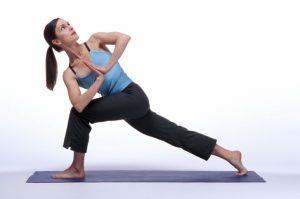New trends in the world of yoga for the well-being of body and mind
di Maria Serena Patriarca

Mens sana in corpore sano: starting from the Lockdown onwards, yogic disciplines, especially the most innovative ones in step with the times, have seen a real boom, with the awareness that inner serenity is just as important as physical fitness. Thanks to the advantage of being able to practice at home, perhaps with online lessons on the main social platforms, many during the pandemic have chosen to approach Yoga to keep fit and rebalance moods of anxiety, uncertainty, fear.
Among the most “trendy” forms of yoga and in harmony with the spirit of Western practitioners, the Forrest Yoga certainly stands out, created by the charismatic American trainer Ana Forrest, who conducts seminars all over the world, including on the web, flanked by the Italo-Australian companion. Jose Calarco. Forrest Yoga, very fashionable on Instagram and YouTube through videos and “posts” and “reels” by its creators, has become a cult also thanks to the book by its creator, entitled “Fierce Medicine, innovative practices to give well-being to the body and revitalize the spirit “. It is a yoga that mixes the ancient Indian teachings with the well-being secrets of the Native American tribes, although currently the Forrest Method has adopted various relaxation and psychophysical “entry” practices typical of the Australian aborigines. It is also a style suitable for overcoming trauma, perhaps combining the practice, of course, with appropriate medical and psychological treatments. In this yoga, grounding, contact with the Earth, and relaxation of the muscles are very important, to benefit the joints and make them more flexible.
Conscious breathing, and music, even contemporary, are the basis of another form of yoga much loved especially by young people: it is Jivamukti, a technique practiced by international stars such as Sting, Kate Moss, Heidi Klum, Gwyneth Paltrow, Uma Thurman. This discipline was born in New York in the eighties, developed by David Life and Sharon Gannon who considered it appropriate to make Indian sacred texts more “usable” for the Western world, within the physical yoga class. In the dynamic flow (flow) of asanas (ie positions typical of Indian hata yoga) that originates during a class of this type, each posture has its “counterpose”, that is the position that balances the previous one. The music that accompanies the Jivamukti can even be reggae, lounge rock or pop, in some cases even opera music, precisely because certain sequences are particularly dynamic, while others are softer, depending on the effect not only physical but above all “energetic” they want to produce in the practitioner. In Jivamukti Yoga, supports, such as straps or bricks, can be used to facilitate the various exercises, and clothing that allows you to move easily is recommended (the ideal are leggings and tight-fitting shirts, for example). Eco-compatible fabrics are currently very fashionable, in some cases made from waste materials from fishing nets thrown into the sea, which find new ecological life by becoming “green” clothing accessories for yoga.
The beneficial effects of these new frontiers of modern Yoga are felt on many fronts: the lymphatic and blood circulation is stimulated, the person’s balance is improved, the posture is realigned, and at the same time tensions are relieved and let go. stress, with excellent results also on insomnia and mild anxiety states. The advice is to always rely on a qualified teacher, without improvising with yoga “do it yourself”, because even the apparently simpler positions – if performed incorrectly – can be harmful to the body and, consequently, to emotions.

